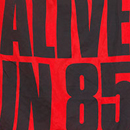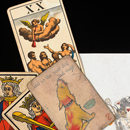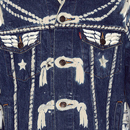Club to Catwalk: About the Exhibition (original) (raw)
10 July 2013 - 16 February 2014
Club to Catwalk: London Fashion in the 1980s explored the creative explosion of London fashion in the 1980s. Through more than 85 outfits, the exhibition showcased the bold and exciting new looks by the most experimental young designers of the decade, including Betty Jackson, Katharine Hamnett, Wendy Dagworthy and John Galliano.
The exhibition traced the emerging theatricality in British fashion as the capital’s vibrant and eclectic club scene influenced a new generation of designers. Also celebrating iconic styles such as New Romantic and High Camp, and featuring outfits worn by Adam Ant and Leigh Bowery, the exhibition explored how the creative relationship between catwalk and club wear helped reinvent fashion, as reflected in magazines such as i-D and Blitz and venues including Heaven and Taboo.
Club
The ’80s saw the explosion of the London club scene. Specialist club ‘nights’ offered opportunities for dressing up in the company of a like-minded crowd. Stevie Stewart of BodyMap explained that ‘each group of people, whether they were fashion designers, musicians or dancers, filmmakers, living together and going out together had a passion for creating something new that was almost infectious’.
Early clubs such as Billy’s, Blitz and the Club for Heroes were small and attracted a selective crowd. As the decade progressed, venues such as the Camden Palace and one-off warehouse parties began to attract much larger audiences. Although less intimate, they perpetuated the creative link between music, club and catwalk. This symbiotic relationship remained the defining characteristic of 1980s style.
Catwalk
In the early ’80s, London fashion began to create a stir internationally. Fashion shows took place in New York and Japan. One breakthrough event, titled ‘London Goes to Tokyo’, included many of the designers featured here and in the upstairs gallery.
The inventiveness of London design owed much to the excellence of the city’s arts education. Colleges such as St Martin’s, the Royal College of Art and Hornsey College of Art offered advanced training in the fundamentals of fashion design, while also encouraging individuality.
At night, young designers’ imaginations were sparked by a vibrant London club scene. John Galliano recalled, ‘Thursday and Friday at St Martin’s, the college was almost deserted. Everybody was at home working on their costumes for the weekend’. Designer Georgina Godley remembers, 'Young London was all about taking risks and creating something out of nothing through passion and ambition'.
Bodymap: Shaping the 1980s
Amidst the colourful extravagance of 1980s fashion, one label in particular stood out thanks to their pioneering approach to making and showing their creations: BodyMap. The V&A looks back at the DIY origins of the label with its two founders, Stevie Stewart and David Holah, and learns of collaborations with a young Mario Testino, Michael Clark and David LaChapelle, among others.
Stevie Stewart: We met on the first day of college - which was in 1979 - Middlesex University (as it’s called now) and we were introduced by a mutual friend who said “look after each other” and we have been looking after each other ever since.
David Holah: London at the time was kind of thirsty for something to happen in the fashion world - buyers weren’t coming, the press weren’t coming. We actually went to New York to do this show called ‘New London in New York’ with Susanne Bartsch.
Stevie Stewart: A very famous club owner Susanne Bartsch, at that time, had her own shop and had become almost like an agent for English individual designers and she took everyone over there and put together a show. It actually took all of the London designers going over to New York for the British fashion press to wake up and realise what they had on their own doorstep. And then everyone came back here, because it had been in the Daily News Record, Women’s Wear Daily, all the fashion bibles at the time then and so then of course there was this huge explosion of interest in to the British youth, street-fashion, culture, etc.
David Holah: So, from there we kind of just went off big time. Stars over night almost, weren’t we?
Stevie Stewart: We’d do our own in-house campaigns with photographers that were just starting out at the time who actually later became very famous – Mario Testino, David LaChapelle. And then we’d have the runway shows, the catwalk shows. Our first solo show we called ‘Cat in the hat takes a rumble with the techno fish’ - so we were inspired by ‘Dr. Seuss’, ‘Cat in the Hat’; the black and white stripes, the funny gloves and then we were also inspired at the same time by a Francis Ford Coppola film ‘Rumble Fish’ that was mostly just black and white except for the fighting fish and the primary colours – so we inserted that in to the show. And then the techno side of it was our mesh print that we did.
David Holah: Helen Terry started the show by singing a cappella. She made up a song about BodyMap and the techno fish and then it starts and the models just took their own lead and did the whole dance thing up and down the runway, it just led itself really.
Stevie Stewart: Later on, Michael Clark – who we had collaboration with – would choreograph our shows and also be in them. I guess the most outlandish show was ‘Isa Comet [a Star a Moon a Sun aura Racoon]’ where we had lasers, Boy George, people singing. Michael choreographed a piece based on ‘Rite of Spring’ for which we had David’s little niece tumble over people. Girls fell down on to the catwalk and then she tumbled over them right to the end of the catwalk - sacrificial maiden!
I’d say it was probably unusual for the generation above us, but in our generation there were more people trying to do things off their own back and pulling on resources. Everyone was very creative and very resourceful.
Lots of different types of people ended up wearing BodyMap and saying they loved BodyMap.
David Holah: Not always young either and not just thin, skinny models. Tiny children, it was for everybody really; it sort of mapped the whole look of everything and everyone.
BLITZ: A History, and the Tale of 22 Jackets
In July 1986, era-defining style magazine BLITZ published an issue featuring images of 22 Levi’s denim jackets that had been customised by some of the world’s most lauded designers – Vivienne Westwood, John Galliano and Katherine Hamnett among them. The jackets went on to be worn during a special evening of performance, and were displayed at the V&A.
BLITZ founder and publisher Carey Labovitch and the magazine’s fashion editor, Iain R. Webb speak about the thrills of setting the magazine up, its unique editorial approach and give us the full story behind the designer denim jacket project.
Carey Labovitch
I set up Blitz because there wasn’t a magazine that I wanted to read around. There were music magazines like NME, Melody Maker, Sounds for boys. There was absolutely nothing aimed at people like myself and my friends. I wanted to read a magazine that was aimed at both girls and boys, but not aimed down at them I mean written by them and for them, and I suppose that’s where Blitz came in.
So 1979, I had no money. I was a student. I was nineteen years old. I decided to set up BLITZ magazine. The subjects were going to be music, fashion, design, art, theatre, photography, general sort of media and arts which wasn’t available to our age group at all at the time. I obviously created the actual magazine on my bedroom floor by sending off for the type-setting, sticking it all together, having the plates made etc.
It could take three weeks from start to finish to actually get a page ready for printing. Collectively, BLITZ, The Face and ID formed a new breed of what was called style magazines: a completely new genre of magazines. It was a range of topics. We would be interviewing film celebrities; music celebrities; politicians; a brown-eyed curly brown-haired Madonna who had just come over from America.
It was a man’s world, publishing was a man’s world definitely. So I was seen, I suppose, as a young upstart. I remember going to see a bank manager with a business plan, my partner Simon Tesler was with me, and I presented this plan. I asked him lots of questions and he came back to Simon with the answers. I was shocked and humiliated and it happened quite a lot. But on the other hand, the good thing about being a young nineteen/twenty year old starting a business is that it attracted a lot of press publicity. BLITZ magazine won awards quite fast.
The fashion pages of BLITZ were very unusual and very creative. We had an amazing fashion editor called Iain R. Webb and he had visions for fashion that weren’t seen anywhere else. He would have babies wearing amazing designer outfits. He would have down-and-out tramps wearing designer outfits. He would have models wearing non-designer outfits. It was a whole eclectic mix of exciting things.
Iain R. Webb
It was amazing the amount of people who wanted to work for BLITZ magazine. My approach was very much about whatever designers I liked that were interesting and exciting. So within BLITZ magazine you had Leigh Bowery, Rachel Auburn and BodyMap who were all mates of mine from the club scene. But I also featured people like Jean Muir who was, you know, an icon of classicism. But anything really that mixed and a lot of the clothes were also from charity shops and things we just sort of found. The ideas for shoots came from pretty much everywhere: I could be at home for the weekend and an old movie would come on TV. I remember seeing, one Sunday afternoon, a film called ‘Pandora and the Flying Dutchman’ and then went in on Monday morning and said we have to do a Spanish matador story and did a whole story based around that.
The designer denim jacket project (as it became) started as just a editorial idea for another shoot and again I think probably it was about taking that classic, iconic item of clothing and thinking we all have a denim jacket.
Carey Labovitch
We gave him free reign. So, he came to us with this idea: ‘I want to take the Levis denim jacket and give it to twenty-two top international and up-and-coming designers and see what they do with it.’ He went off and he gave a jacket to Katharine Hamnett. He gave a jacket to BodyMap. He gave a jacket to Jasper Conran. He gave a jacket to Hermes, they made very expensive scarves that only the Queen and Margret Thatcher would wear. So we had John Galliano, Stephen Jones who made hats - I mean, what on earth was Stephen Jones going to do with a jacket? I had no idea but anyway. Jean Muir, Zandra Rhodes, Paul Smith, Vivienne Westwood, a whole range of different designers.
When he brought the images into the office and we looked at them, I just thought ‘this is amazing’. So we published them in our issue of BLITZ. It was our July 1986 edition and I just said ‘no, this is too good just for this, these are amazing jackets. What’re we going to do with them afterwards? We’re not going to have them hanging up in the offices. We’ve got to do something really big with this. Let’s try and sell the jackets and raise money for charity.’ I went to see the Princes Trust who were really keen. I then went and touted around a few theatres in central London and thought, ‘ if we could actually have a staged show, auctioned the jackets and then they go on display at the V&A that would be a dream come true.’ And that’s exactly what we did.
Yes, it was just the one show on the one night but the atmosphere was electric. It was so exciting, It was like one of our Blitz parties and we did have a lot of BLITZ parties.
Iain R. Webb
And different people did different performances. In a way I suppose it was like performance art.
Carey Labovitch
Fantastic cast of celebrities from Boy George to Patsy Kensit. We had a reading from Daniel Day Lewis.
Iain R. Webb
Leigh Bowery modelled his own jacket and did this spoof fall on stage.
Carey Labovitch
The BLITZ exhibition was the major three month exhibition at the V&A that summer. It then went on to the Louvre, it travelled to the musee des arts decoratifs, it went to Stockholm, it went to Australia and to Barneys in New York.
Iain R. Webb
I think It is very easy to become nostalgic about one’s own youth and the period that you were in but I would like to hope that the legacy of what we did then was to inspire young people to push the boundaries, to kick over the traces, to do their own thing – and scare me a bit, do something that scares me in the way that I think we scared the establishment back then.







